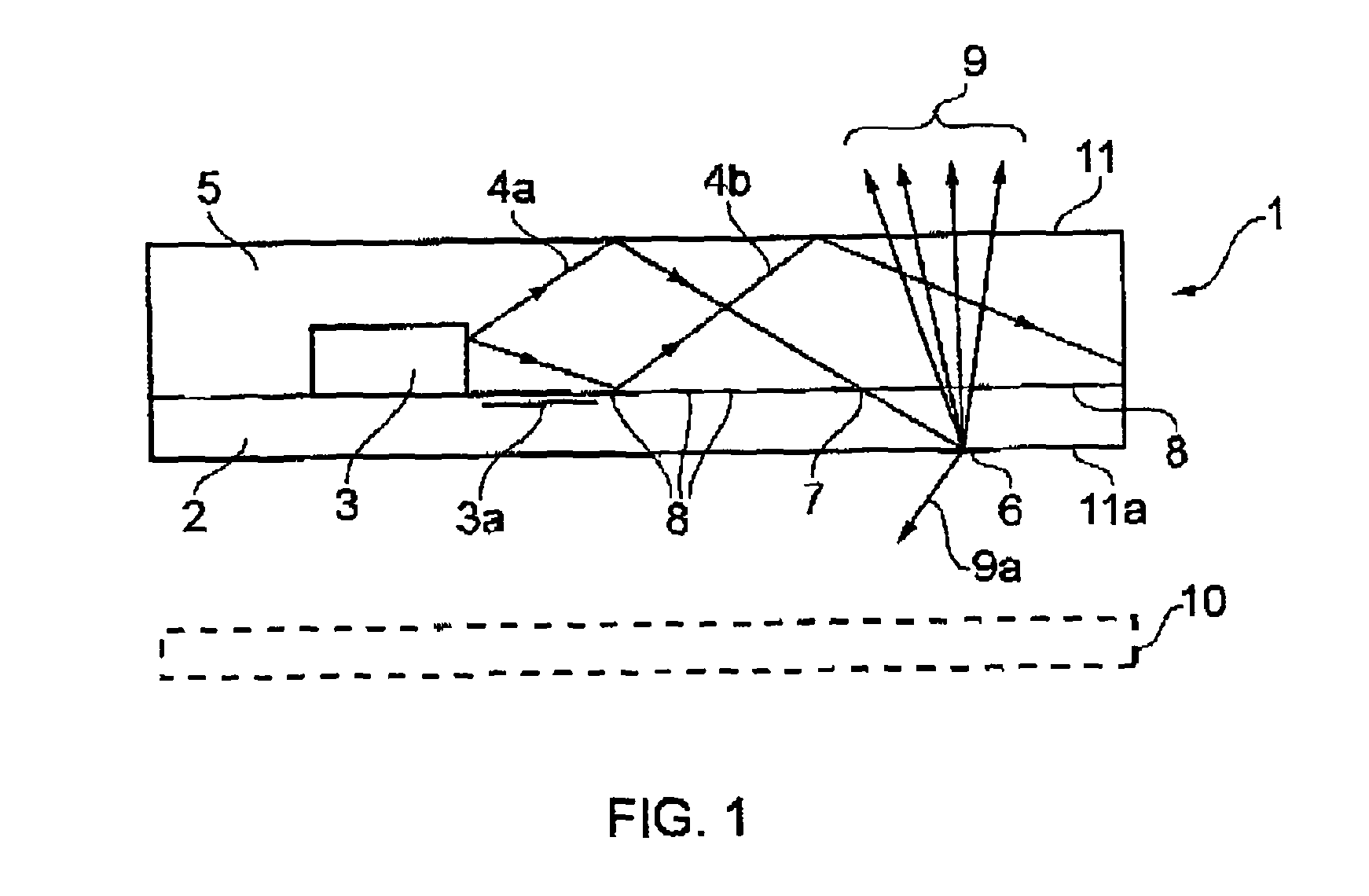Light guides
a technology of light guide and guide rod, which is applied in the direction of lighting and heating equipment, instruments, electrical equipment, etc., can solve the problems of compromising the light uniformity, increasing the complexity of the production process of these devices, and components susceptible to mechanical damag
- Summary
- Abstract
- Description
- Claims
- Application Information
AI Technical Summary
Benefits of technology
Problems solved by technology
Method used
Image
Examples
example 1
[0083]A device in accordance with the invention was constructed as follows. A microstructured film, commercially available from 3M (BEF III), was used as a base substrate. The BEF III comprised features possessing a height of 50 microns, a pitch of 50 microns and a prism angle of 90°. On the top side (first surface) of the BEF was printed conducting tracks (silver particle loaded conducting epoxy) and conducting adhesive in order to mount a number of LEDs (Stanley Tw1145ls-tr) onto the substrate and provide suitable electrical connections onto the conducting tracks. A low refractive index (1.41) cladding material (Dymax op-4-20725) was screen printed onto the top (first) surface of the substrate and above the tracking. The pattern of apertures in the cladding was pitched at 1000 microns, with a width of about 100 microns when located close to the positions of the LEDs, increasing towards about 800 microns when located in between LEDs. A cavity, about 0.7 mm deep was formed around th...
PUM
 Login to View More
Login to View More Abstract
Description
Claims
Application Information
 Login to View More
Login to View More - R&D
- Intellectual Property
- Life Sciences
- Materials
- Tech Scout
- Unparalleled Data Quality
- Higher Quality Content
- 60% Fewer Hallucinations
Browse by: Latest US Patents, China's latest patents, Technical Efficacy Thesaurus, Application Domain, Technology Topic, Popular Technical Reports.
© 2025 PatSnap. All rights reserved.Legal|Privacy policy|Modern Slavery Act Transparency Statement|Sitemap|About US| Contact US: help@patsnap.com


